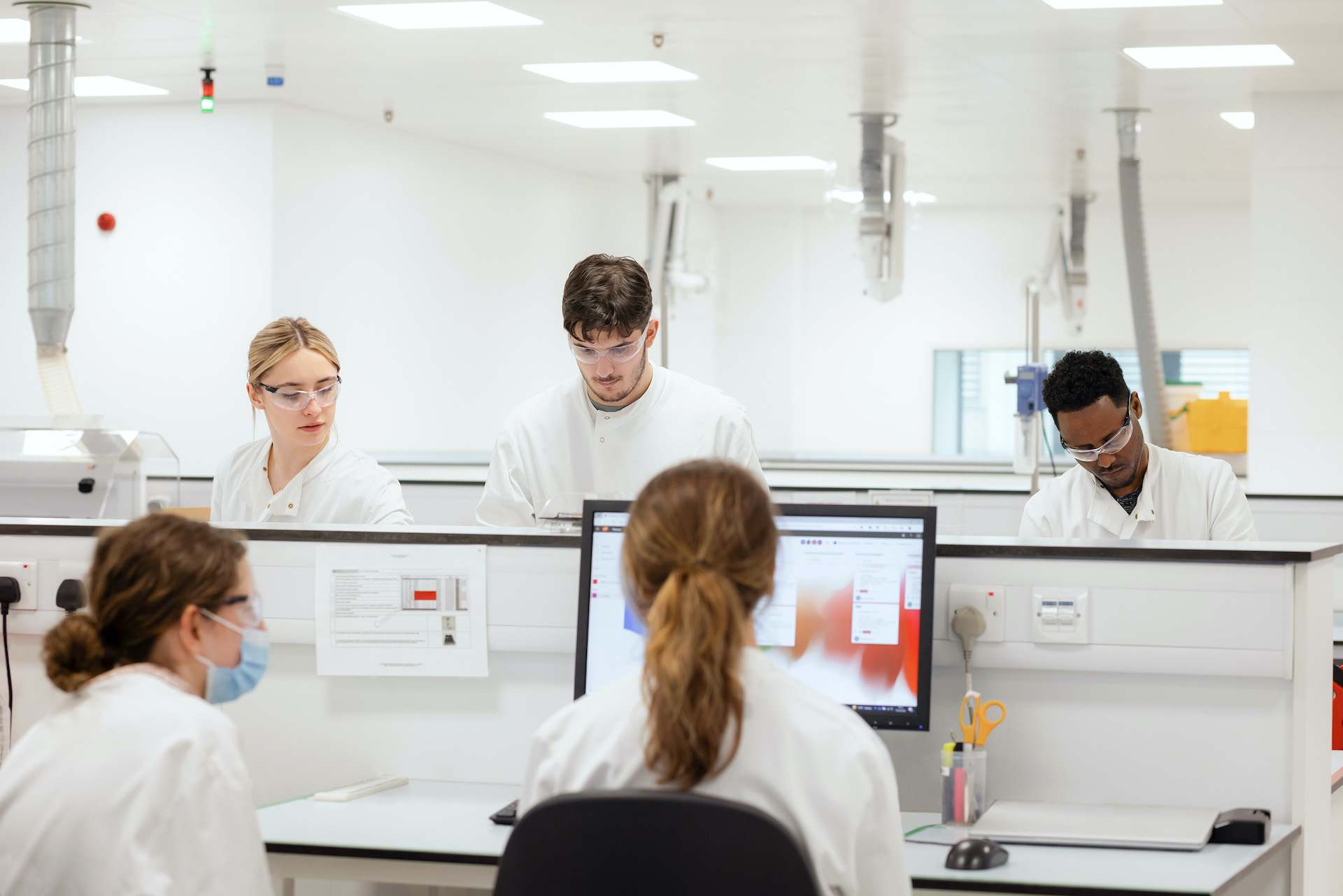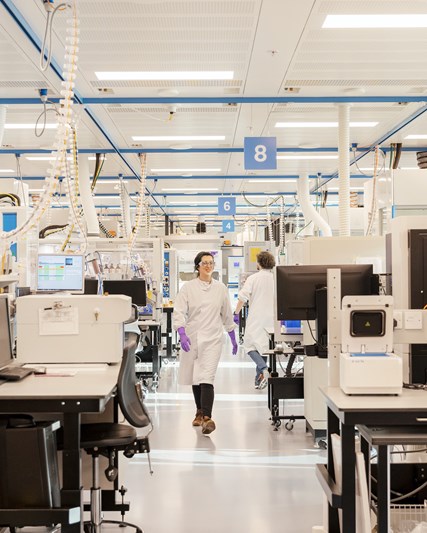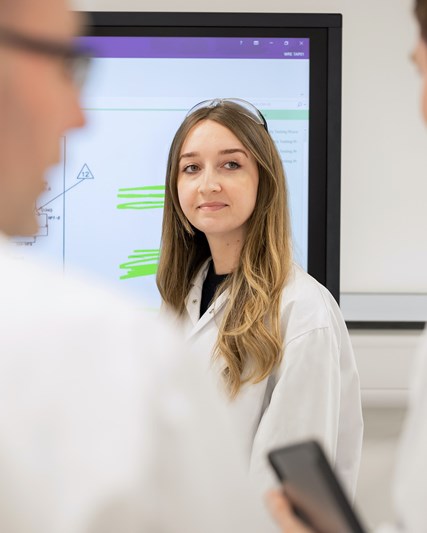RSV has evaded scientists for over 60 years. Now, innovations in structural biology and immunology may bring us closer to finding new ways to help protect people.
Scientists have been searching for ways to get ahead of respiratory syncytial virus (RSV) since 1955, when a new virus was discovered in chimpanzees suffering from respiratory symptoms. Over six decades, RSV has become a significant burden on a global scale.[1]
As COVID-19 restrictions ease, some countries are now reporting a worrying resurgence of RSV infections.[2] [3] Fortunately, thanks to recent advances in science, technology and structural biology, we could finally be on the cusp of finding new solutions for this pervasive disease.
At GSK, we have decades of scientific leadership in respiratory disease prevention and treatment. Combined with our expertise in vaccine platform technologies, we are well placed to drive a unique research and development approach to help us get ahead of RSV.
Who is most at risk from RSV?
The risk is greatest in very young infants who have never been exposed to the RSV virus before. Their airways are very narrow, and their immune systems are still developing.[1]
Unlike some viruses, people infected with RSV don’t build up complete immunity, so it’s possible to become reinfected throughout life.[1] Although subsequent infections are typically less severe, the risk increases again in later life as immune systems decline naturally with age. People who are immunocompromised due to having other chronic health conditions are also at increased risk.[1]
For most people, RSV causes cold-like symptoms. But for these at-risk groups, as well as those with comorbidities, it is a leading cause of serious respiratory infections. These include bronchiolitis (inflammation and congestion of the small airways or bronchioles of the lung) and pneumonia (an inflammatory condition of the lung small air sacs or alveoli).[4]
This is a global issue. Each year, an estimated 1.4 million children under 6 months[5] and over 300,000 adults[6]are hospitalised by RSV. That’s a similar hospitalisation burden to influenza. The real figures are likely to be even higher, as diagnostic tools as limited.[7] [8]
Why is treatment so challenging?
Despite this significant burden and over half a century of research, to date there is still no vaccine available for RSV and treatment options are very limited.[4]
Several factors make tackling RSV challenging. These include the fact that infection occurs at a very young age in infants, the multiple mechanisms that RSV uses to evade innate immunity, the lack of durable protective immunity induced by natural infection, and the decline of the immune system as we age.
Compared to other viruses, RSV is particularly smart at evading our immune system. Because it lives primarily ‘outside’ the body on the surface of our breathing passages, it stays protected from many of our typical immune responses. It can also hamper our immune system’s in-built antiviral response. By ‘flipping’ its proteins, it makes them harder for our antibodies to neutralise – and prevents infected cells from signalling for help.[1][9]
How science can help
Thanks to recent advances in structural biology and immunology, we now have fresh insights into the proteins that help us develop immunity against RSV. We also better understand how to tailor our approach to meet the needs of groups of people who are particularly at-risk.
“We now know that a specific protein – known as ‘surface fusion glycoprotein F’ – is involved in the initial phases of infection,” explains Bishoy. “This makes it an interesting target for research into how to drive immunity against RSV, particularly before it fuses to other cells.[10]
We also know that the immune systems of babies are very different to those of adults. They’re likely to need customised solutions. We need access to a broad range of technologies: one-size-fits-all isn’t good enough.
Collaboration is crucial to put these insights into action. GSK’s scientists are contributing their expertise to various scientific consortia to help advance our shared understanding of RSV. These include ‘PROMISE’ (Preparing for RSV Immunisation and Surveillance in Europe) and ‘RESCEU’ (Respiratory Syncytial Virus Consortium in Europe) which bring together translational scientists, clinicians, public health agencies, the pharmaceutical industry, patient groups and clinical societies.
Together, we can find the solutions needed to get ahead of RSV – and most importantly, bring them to patients as quickly as possible.
References
[1] Vaccine development for respiratory syncytial virus. Graham. Curr Opin Virol. 2017 Apr; 23: 107–112. Accessed: 2/11/21: Vaccine development for respiratory syncytial virus (nih.gov)
[2] Resurgence of Respiratory Syncytial Virus Infections during COVID-19 Pandemic, Tokyo, Japan. Ujiie et al. Emerging Infectious Diseases. 2021; 27:11. Accessed 20/10/21: https://wwwnc.cdc.gov/eid/article/27/11/21-1565_article
[3] Delayed Seasonal RSV Surge Observed During the COVID-19 Pandemic. Agha & Avner. Pediatrics September 2021, 148 (3). Accessed 20/10/21: https://pediatrics.aappublications.org/content/148/3/e2021052089
[4] RSV: Symptoms and care. Centers for disease control and prevention. Accessed 20/10/21: https://www.cdc.gov/rsv/about/symptoms.html
[5] Global, regional, and national disease burden estimates of acute lower respiratory infections due to respiratory syncytial virus in young children in 2015: a systematic review and modelling study. Shi et al. The Lancet. 2017; 390:946–58. Accessed 2/11/21: https://www.thelancet.com/pdfs/journals/lancet/PIIS0140-6736(17)30938-8.pdf (PDF - 1.56MB)
[6] Global Disease Burden Estimates of Respiratory Syncytial Virus–Associated Acute Respiratory Infection in Older Adults in 2015: A Systematic Review and Meta-Analysis. Shi T. et al, Journal of Infectious Diseases, 2020, October 2; 222 (supplement 7): S577-S583. Accessed 2/11/21: https://academic.oup.com/jid/article/222/Supplement_7/S577/5382266
[7] Respiratory syncytial virus infection in elderly and high-risk adults. Falsey et al. N Engl J Med. 2005 Apr 28;352(17):1749-59. Accessed 2/11/21: https://www.nejm.org/doi/pdf/10.1056/NEJMoa043951?articleTools=true
[8] Relative Impact of Influenza and Respiratory Syncytial Virus in Young Children. Bourgeois et al. 2009 Dec; 124(6): e1072–e1080. Accessed 2/11/21: https://www.ncbi.nlm.nih.gov/pmc/articles/PMC3374864/pdf/nihms378994.pdf (PDF - 1.83MB)
[9] Respiratory Syncytial Virus Sequesters NF-κB Subunit p65 to Cytoplasmic Inclusion Bodies To Inhibit Innate Immune Signalling. Jobe et al. Journal of Virology. 94, No. 22. Accessed 2/11/21: https://journals.asm.org/doi/pdf/10.1128/JVI.01380-20
[10] The respiratory syncytial virus (RSV) prefusion F-protein functional antibody repertoire in adult healthy donors. Andreano et al. EMBO Mol Med (2021)13:e14035. Accessed 2/11/21: https://www.ncbi.nlm.nih.gov/pmc/articles/PMC8185550/pdf/EMMM-13-e14035.pdf (PDF - 2.37MB)



